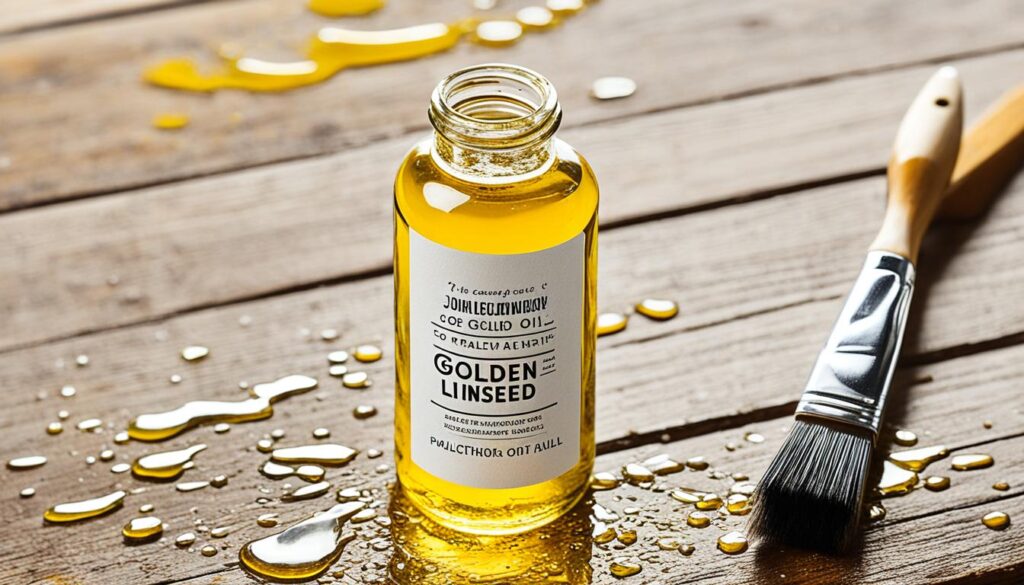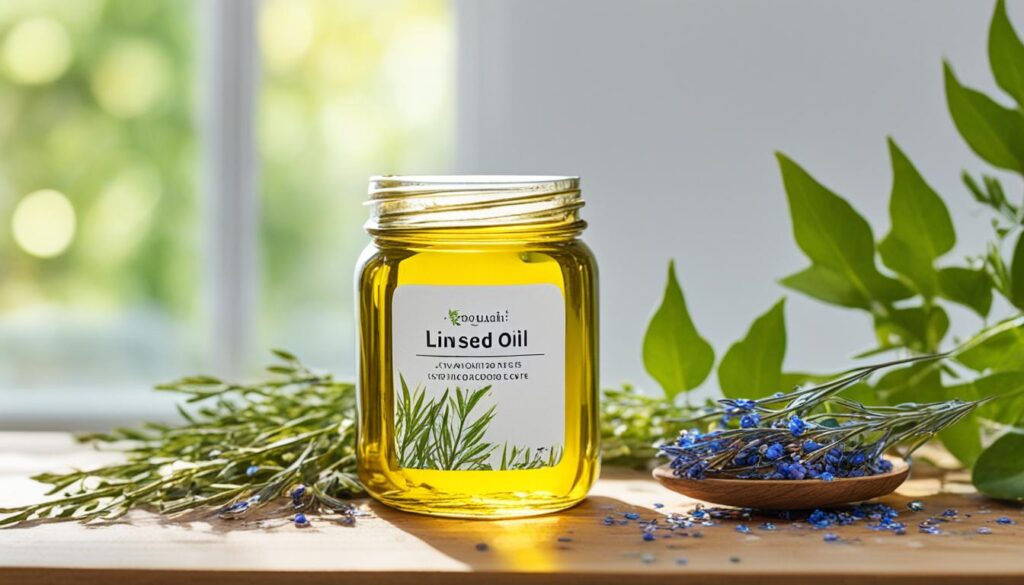Did you know that a can of boiled linseed oil (BLO) can last over 37 years?1 This is just one amazing fact about its long life. As a professional copywriting journalist, I’m here to talk about linseed oil. I will help you store it well so it stays good for years.
Many wonder if linseed oil can go bad. It might change over time, like getting darker or smelling a bit weird. But, this doesn’t mean it’s gone bad.2 Some people used linseed oil that was over 100 years old, and it worked fine.2
The shelf life of linseed oil is pretty good news. Lots of woodworkers and artists say they’ve kept it for years. One person even just finished a can they got in 1986.1 How you store your linseed oil is crucial. I’ll talk more about this in the next parts.
Signs That Linseed Oil Has Gone Rancid
Linseed oil is a common medium in woodworking and fine art. Over time, it can get a stronger, rancid smell. Also, it might turn dark or yellow, especially if it’s kept away from light.1
The bad smell and color change when linseed oil oxidizes.3 Storing it in cool, dark places can slow this aging. It helps the oil last longer.3
A little bad smell in linseed oil is normal. This doesn’t mean it’s gone bad. But, a very bad smell means you should throw it away. It can’t be used anymore.1
Factors That Affect Linseed Oil’s Shelf Life
Storing linseed oil right is key to keeping it good. Put it in small, airtight containers to keep air out. This stops the oil from going bad too fast.2
Letting linseed oil sit in the sun can be good and bad. It might make dark oil look brighter. But, if it’s in the sun for too long, it will get darker after drying.2
Linseed oil doesn’t like extreme heat. High heat makes it turn bad quicker. Then, it might smell funny and change in color and how thick it is.2
| Oil Type | Usage | Durability |
|---|---|---|
| Hardening Oils (e.g., walnut, tung, flax) | Preferred for projects like bowels, sometimes thinned for better penetration | Less durable but more flexible compared to surface coats, offering flexibility to resist expansion and contraction without breaking down |
| Non-Hardening Oils (e.g., mineral oil, crankcase oil) | Used for applications where a building coat is not desired, such as on cedar fences | Thinning oils by about fifteen percent for spray application or using used motor oil can significantly impact wood quality |
Putting oil on wood more than once stops it from splitting and cracking. It adds moisture back and makes the wood swell.4
Does Linseed Oil Go Bad?
Linseed oil doesn’t really go bad, even if it changes in color and smell. Many people say they still use linseed oil from the 1960s and 1970s.1
Some also have linseed oil over a hundred years old. This shows how well it can last over time. The smell might get rancid, but it’s still safe for art use.2
Linseed oil can get darker in storage. But, it can brighten when exposed to sunlight. Different brands can smell differently too. Some may smell more rancid than others.2
Most evidence shows linseed oil lasts a very long time. People have used the same can for over 20 or 30 years. As long as it smells bad or turns thick, it should be good to use.1

Proper Storage Techniques for Linseed Oil
To keep your linseed oil fresh and long-lasting, proper storage is a must. Use smaller, airtight jars for your oil. This reduces air contact and slows down the darkening process.2
Don’t forget to put some petroleum jelly on the jar’s lid. This stops the lid from getting stuck. Opening the jar becomes much easier.2
Storing linseed oil the right way keeps it ready for use for a long time. Stick to these simple rules to keep your woodworking oil in top condition.
Tips for Extending Linseed Oil’s Freshness
Keep your linseed oil in its original metal can with the lid tightly closed. This keeps air away. Air can make the oil old and not work as well.5
It’s important to check the oil often. Look at its color and how thick or thin it is. Any changing signs means it might not be good anymore.5

Also, keep the oil in a cool, dark place. This stops air from making the oil bad fast. Sunlight and big temperature changes can make the oil less useful.5
Doing these easy things will keep your linseed oil fresh. You’ll be ready for your woodworking without worries.56
When to Discard and Replace Linseed Oil
As linseed oil gets older, it might start to smell bad or become thick. These are signs it’s time to get rid of it.7 Seeing it change to a dark or yellow color also means it’s no good anymore.
Check your linseed oil often for these signs. If you keep it in the original metal can with a tight lid, it can stay good for years.7 But, at some point, even the best-stored oil will go bad.
If your linseed oil has gone bad, the smart move is to throw it away. Then, get some new oil to use. Doing this keeps your wood projects in top shape.8
Source Links
- https://sawmillcreek.org/showthread.php?115548-Linseed-oil-shelf-life
- https://www.wetcanvas.com/forums/topic/shelf-life-of-linseed-oil/
- https://www.wetcanvas.com/forums/topic/oil-rancidity-test-article/
- https://www.lumberjocks.com/threads/linseed-oil-questions.307279/
- https://thecraftsmanblog.com/the-ultimate-guide-to-linseed-oil/
- https://woodworkingmasterclasses.com/discussions/topic/finishing-with-linseed-oil-the-details/
- https://www.furnitureclinic.com/boiled-linseed-oil
- https://www.apti.org/assets/Publications/Bulletin/2021/52.4/52.4 Gibbs and Wonson.pdf
Welcome to WoodCraftYard.com, your one-stop destination for all things woodworking! I’m Oliver Candler, a dedicated woodworking aficionado and the creative mind behind this virtual woodworking haven. With a deep-rooted love for craftsmanship and a keen eye for detail, I am on a mission to share my passion for woodworking with fellow enthusiasts like yourself.
As a seasoned woodworker, I am committed to providing you with valuable insights, practical tips, and inspiring project ideas to help you unleash your creativity and master the art of woodworking. Whether you’re a seasoned pro or just starting out on your woodworking journey, join me as we carve, sand, and saw our way through the world of woodworking together.
Let’s embark on this woodworking adventure, where every knot, grain, and finish tells a unique story. Together, let’s craft, create, and build something truly extraordinary at WoodCraftYard.com!

